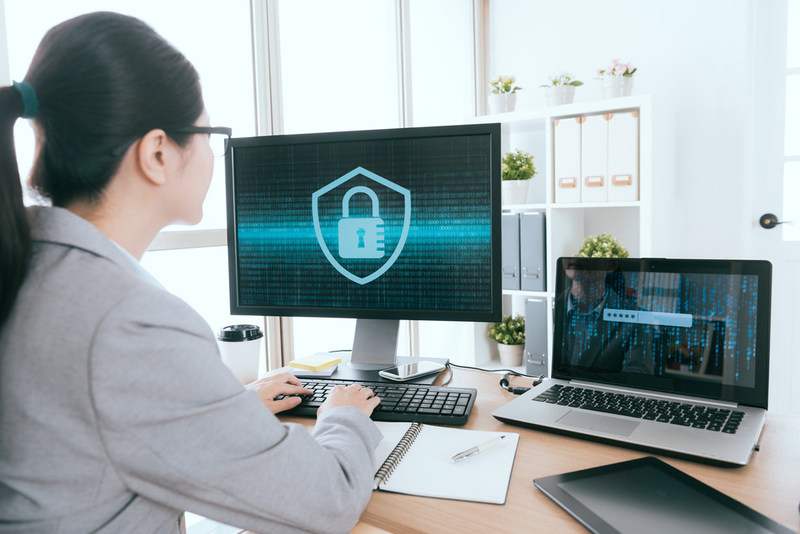Office Security - 10 Great Tips For a More Secure Workplace
Today, organizations must manage and prepare yourself for security threats that are far larger and more varied than ever before. With each technological progress which allows advanced, effective business plans, comes a security threat that's just as innovative and both effective.
Any appraisal of an office security system should begin with special security needs and the consequences they could have on your business in general. But here are ten important ways to better your workplace safety system.
Effective Communication: above all is communication information to and between employees. Many companies use email alerts to warn employees about prospective hackers. Likewise, be sure employees remain updated on procedures and potential visitors. By allowing workers understand very well what and that to expect, they are better equipped to recognize suspicious activities or humans. As a way to prevent complacency, decide to try using one source of information which becomes a portion of a employee's routine. This might possibly be an everyday host broadcast or informational email. No matter the source, it should be brief, practical, and comprise favorable news in addition to precautionary information.
Key Control: Establish the duty of unlocking or locking any office to as few individuals as possible. Create an operation for individuals accountable for opening or shutting your workplace that includes checking washrooms, cabinets, or anywhere someone may be able to cover up. Employees assigned keys should periodically be requested to produce their keys to verify a master registry.
Mandating employees to have and display ID badges or access cards in all times increases the visibility of almost any unauthorized persons. Do not include job titles on any directory accessible to the public due to the fact that many criminals will make use of a name and title to warrant their own presence in restricted areas. Finally, make certain that you keep a"chain of ownership ." Any deliveries must be handed to a individual and not abandoned in a hallway or onto an unattended desk.
Small Investments: All of laptops, laptops notably, should be secured with plate or cable locks to avoid"walkoff." Docking stations are rather inexpensive techniques to protect electronics devices when not being used. Pay close focus on risky targets like state-of-the-art equipment, postage meters, assess writers, and company checkbooks. Utilize two secured doors enclosing a small lobby or foyer. This form of"airlock" system eliminates piggy-backing, a method criminals use to gain entry by catching a locked door as an employee exits.
Anti-Virus: Though it's extremely unusual for a company to not own anti virus software in this time, it is impossible to comprehend its importance. High-end protection from viruses, spyware, malware, Trojans, and worms is one of the shrewdest investments that an off ice can create. This includes firewall security for the primary system, security for your own wireless Web routers, and securing backups of most data, rather off site, for retrieval in the event of a cyberattack.
Lights, Camera, Layout: Be conscious of"dark stains" both indoors and outside your office. Install adequate lighting in parking lots and outside break areas for employee protection, remove blind are as from stairwells, and arrange offices and halls to remove any places where someone could conceal himself or stolen items. Short of CCTV, discussed here, it might be worthwhile to install recording security camera systems in key areas such as loading bays and access points such as afterhours entrances.
http://www.animalbcn.com/uncategorized/5-easy-steps-to-improving-your-security-guard-service/ : One of the complete solutions will be to hire one or more regular receptionists. From a security approach standpoint, this individual allows for detailed review of credentials and identification and funnels security information through a single point. If it's reluctant to have each visitor greeted and checked-in with someone, consider a dedicated phone line in your reception or in your front door which goes just to a designated recipient. This approach, combined with a mutually channel, can be quite a cost effective way for all offices.
Access Control System: One of the issues using hard keys is reacting when a person can be lost or stolen. Furthermore, access control techniques minimize risk by allowing only enough accessibility to finish a job. Hence, contractors, employees, or visitors can be confined by area or period of day. A couple of things are critical with access management methods. To begin with, allow"full access" to as few individuals as possible. Second, monitor using each card. By reviewing card activity, you could find out who needs access to where and in which occasions, alerting routines and defining access.
Closed Circuit Television (CCTV): For higher end security platform needs, CCTV is probably one of the very best techniques of protection. Through limited broadcast, each camera could be tracked through one interface. Based upon the particulars of this system, footage might be tracked by an employee or digitally recorded. Put cameras strategically to reach the maximum coverage for a single unit. Like wise, corresponding or cameras signs which can be visible to guests and employees can be effective deterrents and create a safe atmosphere. It's very important to remember, however, as effective as CCTV is, it should really be used economically and in tandem with additional measures. For example, installing a machine at an entrance having an"airlock" door system allows lengthy footage of a person(s) entering or leaving the assumptions.

Good Training: Most importantly, make sure all your employees is adequately trained to make use of security equipment and follow procedures. Investment and preparation at the best security strategy will probably have little impact if individuals are uncertain on precaution and intervention. This may be as simple as making certain employees keep windows and doors secure or protect their own personal belongings, but often entails specific training about identifying and responding to suspicious items, persons, or events.